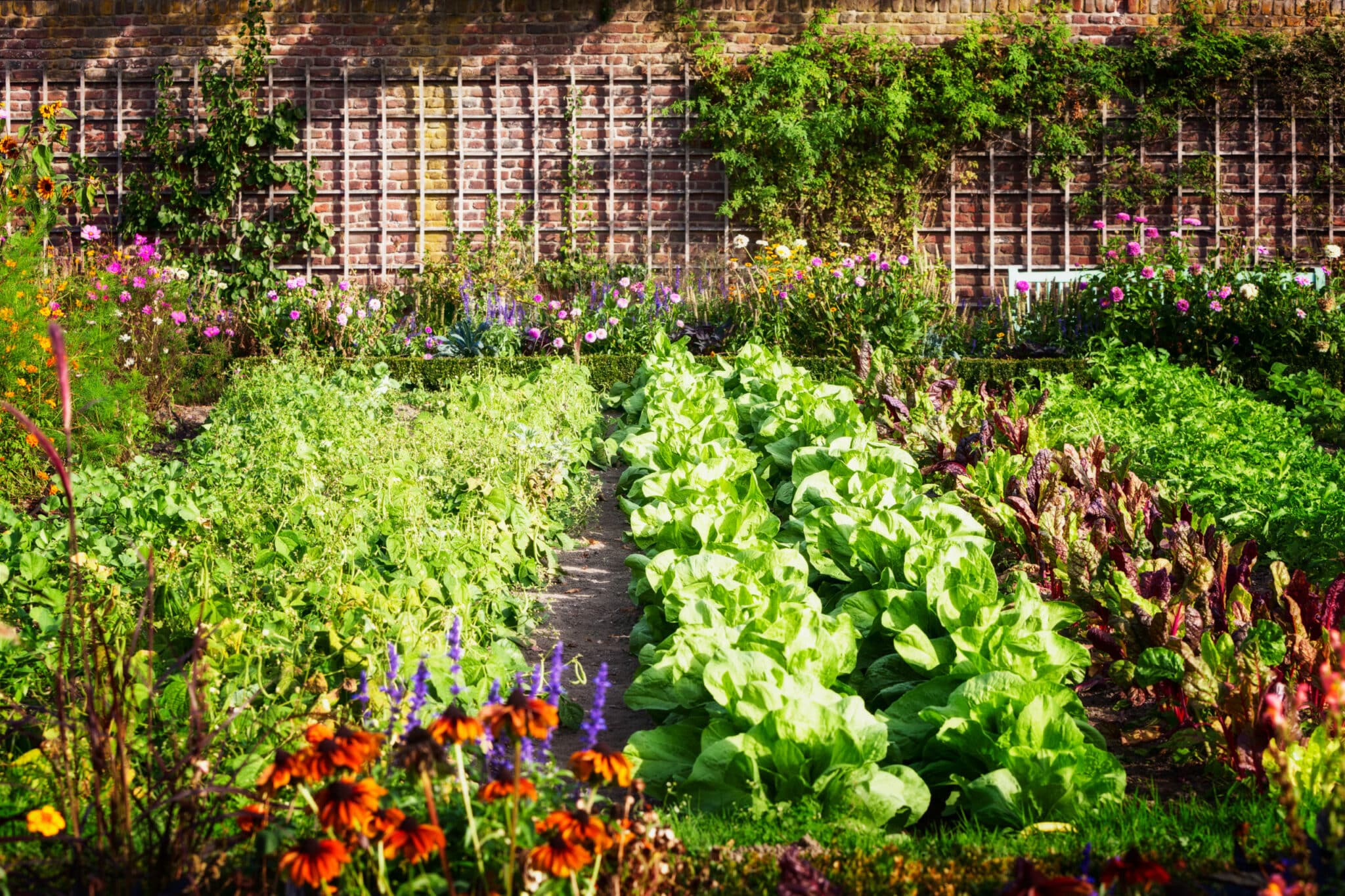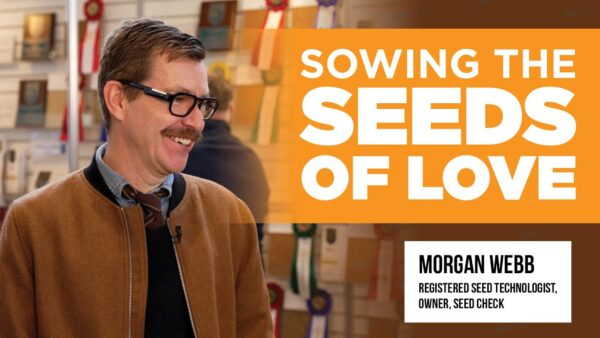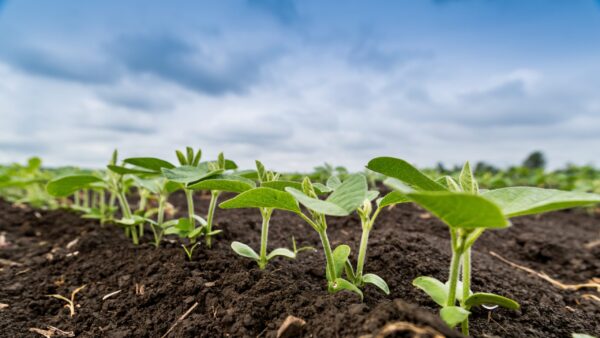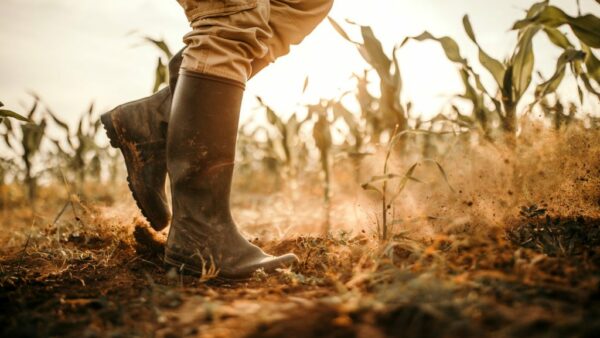The future of farming in urban areas continues to develop.
Whether squeezing a mini meadow between the road and the sidewalk, or building a fully functioning farm, urban agriculture has an important role to play in meeting the nutritional and environmental needs of a growing world population.
Various forms of urban agriculture are practiced by millions all over the world and 15 percent of the world’s food is grown in urban areas, according to the 2018 USDA NRCS video segment Farming in the City.
Mini Meadows
“People are wanting to do something good for the earth, and for us, that means providing solutions for people in urban settings, whether that’s through a mini meadow, or growing vegetables where we didn’t used to be able to grow them,” says Mike Lizotte, owner and manager of American Meadows. “There’s never been a better time to support pollinators or grow your own food,” he says.
Lizotte believes you can make a “mini meadow” anywhere, including on rooftops, next to sidewalks, or in a planter box. Mini meadows can be a planter as small as two square feet or a plot of land as big as 2 acres. The idea is simply an informal flower garden started with seed sown directly into the soil. Not only is it fun for consumers to plant and grow, but it’s helpful for pollinators, too.
“There are a number of different environmental aspects working against them, but one of the biggest things that’s threatening pollinators is habitat decline. So, even in an urban landscape, anything we can do to support pollinators, the better they are going to be,” Lizotte says.
It’s also better for cities.
According to the EPA’s Basic Information about Brownfields and Urban Agriculture, creating community gardens in New York, NY increased residential property values by as much as 9.5% in five years in low-income neighborhoods. In Philadelphia, PA, values have gone up by 30% after turning these now unused but previously developed land plots into gardens or greenspace.
Focusing on Food
“As people want to understand and be closer to their food sources, urban agriculture continues to be at the forefront,” Lizotte says.
But it’s important to keep in mind there’s a big difference between a not-for-profit community garden, and a successful urban farming business.
Thomas Wheet, research and logistics coordinator for Urban Agriculture & Entrepreneurship, University of the District of Columbia, is working to shift the idea of urban agriculture to something scaleable and sustainable.
“One of the bigger issues we face is that urban agriculture has been primarily focused on the nonprofit model, which is good in many ways, but I do think that makes it more difficult for individuals to see the true businesses potential of urban agriculture,” he says.
In addition to considerable upfront costs, it’s tempting for urban agriculture projects to be seen as little more than educational opportunities for students.
“We’re so far removed from our food production, and it is important to connect kids to that, but when we focus on that too much, people don’t see urban farms as a true business model. There is money out there when we shift that focus for people and truly adopt those efficiency-based business practices,” Wheet says.
Wheet manages the Bertie Backus Food Hub for the Center for Urban Agriculture and Gardening Education. He specializes in hydroponic and aquaponic methods to grow plants without soil in nutrient-rich water, with 2500 square feet of each at his facility. He sees this type of urban production as the most likely option to sustainably meet the nutritional demands of urban consumers.
“I’m trying to show that this is a viable business model that can be recreated throughout the city as we find innovative ways to combat food deserts,” Wheet says. “I don’t think we’re as far away as people think. There are good distributors out there that are able to work with small scale farmers. The foundations are set up really well and we’re continuing to push on the grower and research side,” Wheet says.
Seed Selections
When it comes to crop selection, Wheet prefers to try a variety of fruits and vegetables.
“The beauty of hydroponics is that you can grow anything, but investors and businesses need proof of concept that what we’re trying to do will actually work long term, so I like to push the boundaries of what can be grown and distributed this way,” he says.
He believes that to truly fill nutritional voids of these urban communities, urban farming businesses have to continue to expand beyond the world of lettuce and microgreens.
“I grow a lot of peppers, and per square foot, they aren’t that profitable, but I want to offer a complete salad, rather than just lettuce,” Wheet says.
He’s been pleased with the seed selection available to him.
“I like to try the cool, funky stuff, and maybe show people something they have never seen before. Sure, they’ve had basil, but have they seen wasabi arugula?” he asks.
Industry Interests
Lizotte, who serves on the board for the Home Garden Seed Association, says the seed industry is working to provide results to support these trends.
“There is a heightened awareness to make sure we are putting together solutions that are applicable to urban settings,” he says.
Education will continue to be important, as well as managing expectations.
“Even with small scale gardening in an urban space, we need to be realistic with customers and if they are committing to water it and care for it,” Lizotte says.
It’s about aligning products with projects, and understanding that urban environments come with unique challenges and potentially more extreme conditions.
For example, Lizotte recalls one project where a rooftop garden was planted at an urban airport.
“Whoever selected the plants didn’t choose varieties that could tolerate that extreme heat and constant sun exposure in that environment, and it turned into a complete failure,” he says. “We have to make sure to select the best plant material to handle those growing conditions.”
Lizotte sees a strong social media presence as one way to meet this need.
“We can use those platforms to educate and inspire, especially in an urban setting,” he says.
Rising to the Challenge
USDA offers educational and financial resources developed by federal, state and local partners, detailed in their Urban Agriculture Toolkit. Topics covered include land access, soil quality, water usage, safety, infrastructure, production, market development, and capital resource and financing support.
“This fast-growing phenomenon has the potential to nourish the health and social fabric of communities and create economic opportunities for farmers and neighborhoods. But it also comes with a unique set of challenges and opportunities,” USDA says in the toolkit.
When considering these challenges, and especially the financial factors of urban agriculture efforts, Wheet encourages the consideration of broader benefits.
“Yes, we can give more people access to healthy foods, and we can decrease the cities’ carbon footprint, those are important. But from a business perspective, I often talk about how many jobs can we sustainably create, or how many downstream entrepreneurs can we support,” he says. “These are all big picture benefits that people might not originally connect with urban agriculture, but it helps justify that this is something worth investing in.”
If You Liked This…
Mike Lizotte Says 2021 Planning Not So Easy
Can Good Cooks Make Good Plant Breeders? Kim Gibson Says Yes
Vertical Veggies Mean Opportunities for Seed Companies are Sky-High











